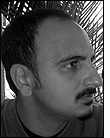The Università degli Studi di Roma “La Sapienza“ (University of the Studies of Rome “The Wisdom”) has been operating its 200-square-meter RFID center since 2004. In that time, it has developed a number of RFID projects for the Italian government. Now it says it will soon be offering the lab’s services to companies interested in using RFID.
The lab is run by four different university departments—commerce, engineering, computer sciences and the Center for the Application of Television and Distance Learning Techniques (CATTID)—as well as by a private university spin-off company, MultiMedia Trading (MMT), which will sell the services developed at the lab.
Carlo Medaglia, full professor of wireless networks at the University of the Studies of Rome and a coordinator of the RFID Lab, says the lab is not partial to any RFID vendors, so companies can try different RFID technologies before deploying them in a pilot. “We can not only support technical aspects, but the commerce and engineering schools can also support processes analysis, and make a realistic analyses of the impact of RFID,” he says.
Until now, the government funded all work at the lab. However, commercial projects are already lined up. Location systems specialists GEODAN of the Netherlands and Ubiquicom of Italy have plans for two geo-location applications using RFID and Wi-Fi. Siemens and Italian systems integrator Hi-Pro each have RFID projects on tap, as well.
Interest in RFID and its applications is growing in Italy, even though the Italian military controls the 865 MHz to 868 MHz UHF radio frequency band designated for RFID use across the majority of European Union states. The lab has thus had to restrict its work to high-frequency (HF) and low-frequency (LF) RFID systems, though it hopes to get a site exemption license to enable it to test UHF systems.
One of the lab’s current government-sponsored projects involves using RFID tags to provide information to museum visitors. The autonomous region of Lazio (Latium) had provided a one-year grant for a project involving one of the region’s museums. The system will use PDAs equipped with RFID interrogators (readers). An HF (13.56 MHz) tag with a unique ID number will be placed on each museum display. Visitors will be able to hold the museum-issued PDA close to a display’s RFID tag to learn more about the item being displayed.
When the PDA transmits a tag’s unique ID to a server over a wireless LAN connection, a related text file is downloaded to the PDA. Using text-to-speech software, the PDA uses a Bluetooth connection to transmit details to an earpiece worn by a museum visitor. This project will be deployed before the end of the year. The lab is also discussing potential deployments with several other museums in the region and expects to make a final decision regarding those deployments by July.
Additionally, the same text-to-speech software, PDA and wireless LAN equipment have been earmarked for an RFID system to help the visually impaired negotiate unfamiliar buildings. The university is proposing a system where RFID tags—in this case operating at 154.3 kHz—are placed 25 centimeters (10 inches) apart in three parallel rows. A reader at the tip of the visually impaired person’s cane detects the tags, and a server linked to the PDA provides a directional message, which is then transmitted to the person’s headset. “We have a meeting next week with a principal politician in Lazio about potentially deploying this system in a few government building,” says Medaglia.
With an eye toward commercial RFID adoption, the lab is also working on the potential use of RFID for baggage and document tracking, supply chain management and smart shelves.


